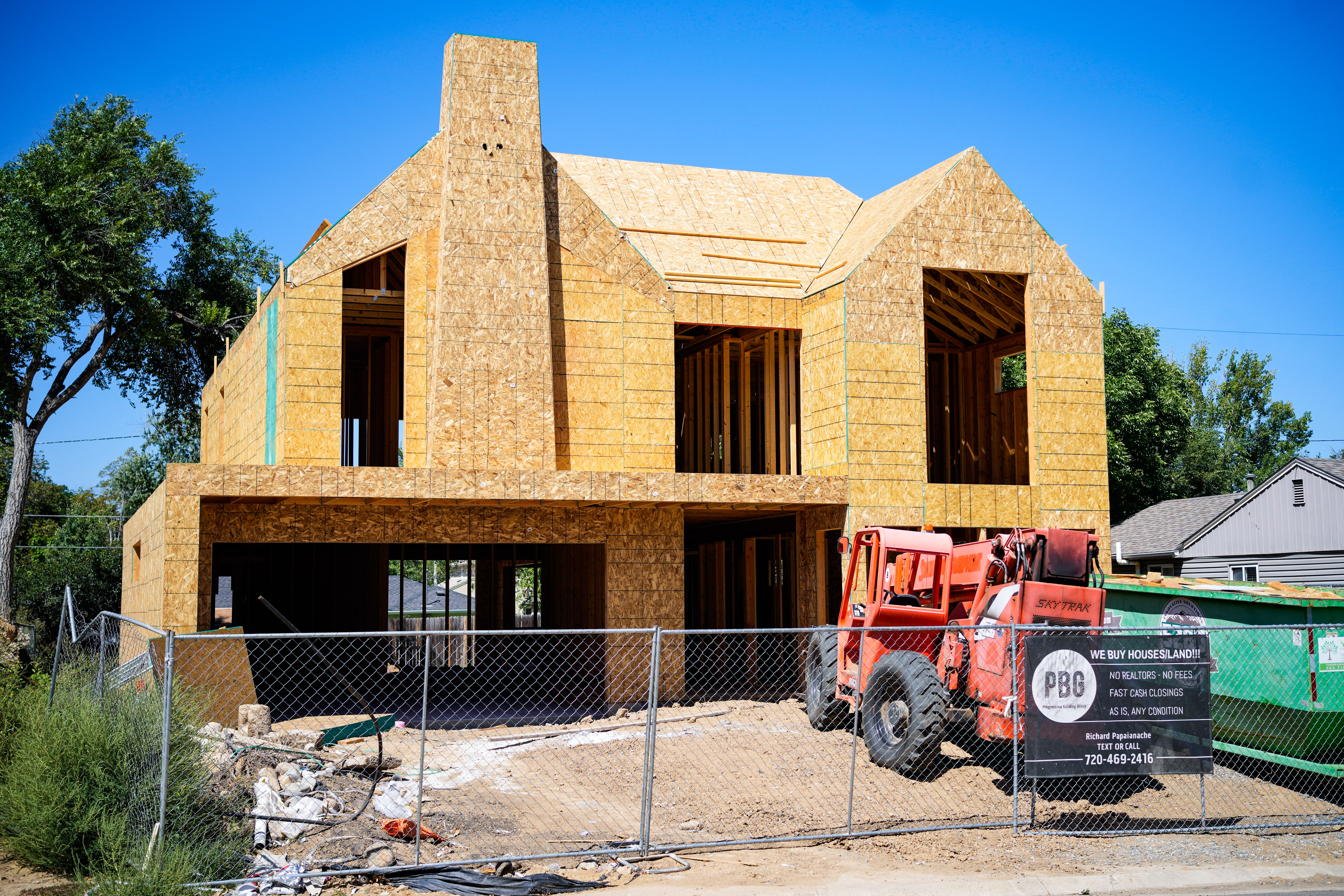Homebuilder sentiment showed a marked improvement in November, while six-month-ahead sales expectations for single-family homes soared to a 30-month high as builders expressed confidence that a Republican trifecta in Washington will boost the housing market by delivering regulatory relief.
The National Association of Home Builders (NAHB) Housing Market Index (HMI) rose three points, to 46, in November, according to a Nov. 18 press release. That’s the highest level for the sentiment gauge since April, although it’s still below the 50 mark, indicating continued pessimism. Analysts had forecast the index to remain at 43, with Monday’s data amounting to an upside surprise.
“While builder confidence is improving, the industry still faces many headwinds such as an ongoing shortage of labor and buildable lots along with elevated building material prices,” NAHB chief economist Robert Dietz said in a statement.
However, it’s the NAHB’s forward-looking sales index that saw the most noteworthy improvement. Homebuilders’ six-month-ahead sales expectations for singe-family homes soared to a reading of 64, the highest level since April 2022, when it stood at 73. Readings above 50 represent builder optimism.
NAHB chairman Carl Harris attributed the increase to expectations that President-elect Donald Trump’s election win—along with projected GOP victories in both the House and Senate—would usher in a period of regulatory relief.
“With the elections now in the rearview mirror, builders are expressing increasing confidence that Republicans gaining all the levers of power in Washington will result in significant regulatory relief for the industry that will lead to the construction of more homes and apartments,” Harris said in a statement. “This is reflected in a huge jump in builder sales expectations over the next six months.”
Also, NAHB’s gauge charting traffic of prospective homebuyers rose three points, to 32, in November, the highest since April.
The improvement across all three of NAHB’s measures of homebuilder sentiment in November suggests that builders have grown more optimistic about the potential for regulatory changes that could ease supply-chain constraints and reduce costs, which could help address the ongoing housing affordability crunch.
Other housing market data have also shown improvement.
Existing home sales rose 1.6 percent in October, marking the largest monthly gain since January 2022, according to a Nov. 15 report from Redfin. This also represents a 1.7 percent year-over-year increase, the first annual rise since November 2021. Overall home sales, including newly built properties, grew despite a 5.2 percent year-over-year increase in median home prices, to $435,313.
The surge in October sales followed a temporary dip in mortgage rates, to 6.08 percent in late September, boosting buyer activity. Also, pending home sales rose 7.4 percent in September (the latest month of available data), according to the latest report from the National Association of Realtors (NAR).
“Contract signings rose across all regions of the country as buyers took advantage of the combination of lower mortgage rates in late summer and more inventory choices,” NAR chief economist Lawrence Yun said in a statement. “Further gains are expected if the economy continues to add jobs, inventory levels grow, and mortgage rates hold steady.”
Pending sales data for October will be released on Nov. 27, according to the NAR.
Meanwhile, Zillow’s Nov. 18 report highlighted improved affordability in September, with middle-income buyers able to afford 27.3 percent of homes for sale, the highest since February 2023. Zillow forecasts mortgage rates to continue moving lower into 2025, although buyers should expect more rate volatility ahead.













